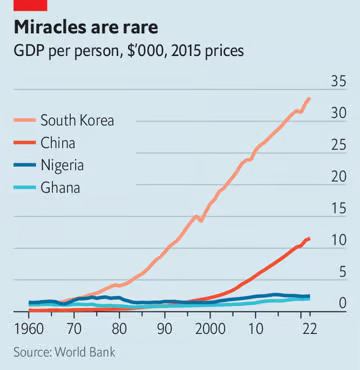By 2050, a new generation of economic powers is anticipated, with ambitious goals set by leaders worldwide. India, led by Prime Minister Narendra Modi, aims to surpass the World Bank’s high-income threshold before 2050, while Indonesia strives to catch up with developed nations by mid-century. Saudi Arabia, under Crown Prince Muhammad Bin Salman’s vision, seeks to transform into a diversified economy. Despite varying strategies, these nations share a common thread of extraordinary ambition. Achieving such goals demands unprecedented growth rates, challenging traditional prescriptions for economic development. Rather than adhering to conventional wisdom, leaders like Modi and Prince Muhammad are betting on cutting-edge manufacturing, departing from the historical reliance on large, cheap workforces.
While traditional manufacturing faces challenges due to technological advancements and the diminishing role of labor, nations like India are shifting focus to high-tech manufacturing. Protectionist measures, such as import bans and subsidies, are being employed to stimulate domestic production. However, the success of these strategies is mixed, with some countries experiencing early gains, while others struggle to attract significant investments. A growing emphasis on attracting industries related to natural resources, particularly metals and minerals crucial for the green transition, is evident. Indonesia, for instance, has implemented export bans on bauxite and nickel, aiming to encourage refining activities within the country and create a self-sustaining supply chain.
Another strategy gaining traction in fossil fuel-rich regions, such as the Gulf, is to position themselves as global business hubs. As the world moves towards net-zero emissions by 2050, these economies are diversifying, focusing on industries like shipping, tourism, artificial intelligence, and education. Saudi Arabia, in particular, is investing massively to increase foreign investment and expand its industrial base. The United Arab Emirates and Qatar are also adopting similar strategies, fostering economic diversification and growth beyond oil-related sectors.
However, challenges persist, such as the overreliance on government spending in the Gulf, hindering the private sector’s emergence. The effectiveness of massive investments in industrial parks, subsidies, and export incentives is difficult to assess, raising concerns about the sustainability of economic growth. While leaders pursue ambitious visions for economic development, the success of these strategies remains uncertain, and careful evaluation is needed to determine their long-term impact on global economic dynamics.
The right horse?
Several countries are on a quest to attain high-income status, employing diverse strategies. The United Arab Emirates’ substantial investment in artificial intelligence holds promise, while Indonesia seeks advantage in a world increasingly reliant on nickel. India, with its youthful population, is poised to avoid stagnation. Yet, the chosen paths of nations—embracing high-tech manufacturing, leveraging the green transition, or redefining their role as global trade hubs—entail significant risks and hefty expenses. Early insights reveal key lessons.
Foremost among them is the heightened role of the state in economic development, marking a departure from recent decades. The transformation from agrarian poverty to competitive, diversified industries demands substantial infrastructure, research, and state expertise, possibly involving below-market-rate lending. State involvement is deemed inevitable, necessitating policymakers to make strategic choices and identify potential winners. This increased intervention contrasts with the waning influence of the Washington Consensus. Governments, having grown impatient, are surpassing the simplicity of its reforms, with institutions like the IMF and World Bank losing their past prominence.

Contemporary policymakers in developing nations look to China and South Korea for inspiration, reflecting a shift from earlier interventionist strategies. The historical perspective reveals that in the 1960s and 1970s, both East Asia and Africa enthusiastically experimented with industrial policies, experiencing similar growth rates for nearly a decade. However, by the mid-1970s, Africa faced the consequences of misguided policies, leading to a “African tragedy” marked by economic contractions. In more recent times, Saudi Arabia’s substantial spending on a petrochemical industry resulted in failure, highlighting the perils of overlooking cost-effectiveness.
A second observation is the substantial financial commitment made by most countries to their chosen development paths. Smaller nations like Cambodia or Kenya risk a financial crisis if their strategies falter, as seen in Ethiopia, where debt defaults coincided with civil conflict. Even larger countries, such as India and Indonesia, cannot afford a second attempt at development, facing fiscal constraints if their current efforts fail, compounded by the challenges of aging populations. Wealthier countries, like Saudi Arabia, must develop before the demand for their primary resources diminishes.
The third insight is the evolving nature of economic growth. According to research by Mr. Rodrik, manufacturing has traditionally been the avenue through which poor countries enhance productivity faster than their affluent counterparts. However, modern industry might not offer the same advantages. Instead of focusing on improving factory processes, countries aspiring for prosperity are increasingly involved in mining green metals (a sector with notoriously low productivity), catering to tourists (another low-productivity domain), and assembling electronics (as opposed to manufacturing intricate components). This shift suggests that the pursuit of wealth in the 21st century will be more challenging than in the 20th century.

